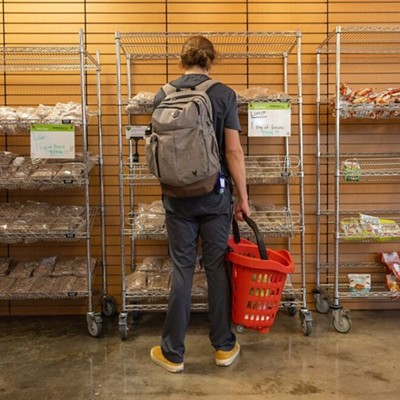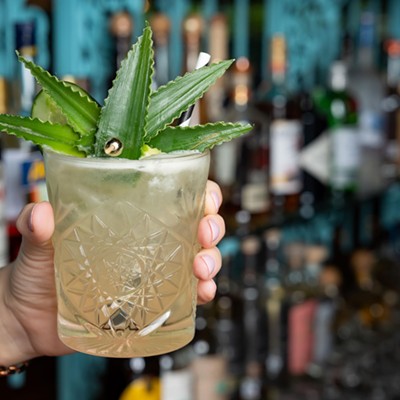So, what's the deal with old wine, anyway?
Wednesday's post on What Are "Tannins" in Wine? got me thinking about the widely divergent ways Europeans and Americans perceive and approach the consumption of "old wine." Tannins and "tannic structure," after all, are part of what gives wine its longevity.
Not all wines are intended for long-term aging. In fact, most are not. The vast majority of wines available to us were vinified for early consumption. And even some of the world's most tannic wines are produced in a style that makes them more approachable in their youth.
However tannic they may be, the California style of high alcohol and low acidity makes for bottlings of Napa Valley Cabernet Sauvignon that will reach full maturity in less than 20 years. Even the highest-end Napa wines from the 1990s are beginning to wane while traditional-style wines from France and Italy (high acidity and lower alcohol) are just beginning to hit their stride. (The Robert Parker Vintage Guide, available even to nonsubscribers, gives a snapshot of this phenomenon.)
And while most Europeans will wait ten to 12 years before they begin to open tannic wines, they don't fetishize old wine the way we do in our country. When my Italian friends want to celebrate with expensive wines like traditional-style, highly tannic, ten-year-old Barolo, for example, they'll open the wine early in the morning and let it aerate all day before they serve it (aeration helps to mellow the tannin and allows the wine's fruit to emerge). Some will even open the wine the day before.
But the fact is that few Europeans collect wine the way we do in English-speaking countries.
Historically, the British were the first to embrace the notion and cult of old wine. English bankers of the 19th century favored the wines of Bordeaux, France, in part because English Channel shipping lanes made it easy for them to procure the wine and in part because they discovered that their cold cellars slowed the wine's aging process, resulting in more delicate "claret" (as it was called then).
Today, in the United States, the ultra-rich love to engage in one-upmanship, bragging (i.e., dick-wagging) to their friends about their 1961 Pétrus or Cheval Blanc (remember the scene in Sideways?), their 1958 Giacomo Conterno Monfortino, their 1971 Domaine de la Romanée-Conti La Tâche or their 1979 Krug Brut.
But most of us -- the 99 percenters -- will never get to taste any of these wines (and for the record, although I've had the great fortune to taste a lot of old wine, I don't get invited to the dick-wagging parties; they're strictly for AMEX black card members only).
One of the biggest problems that we face is that, because few of us have the means to properly cellar wine, our contact with old wine is limited to restaurant wine lists. And once we're seated at a restaurant for dinner, old wine doesn't have the time necessary to "open up," even if decanted. When you want to mark a celebration with a special bottle of old wine, my advice is to call the restaurant beforehand; speak to the sommelier, telling her or him what you'd like to spend and inquiring as to which old lots are showing well. Once you've made a decision, ask the sommelier to prepare the wine before your dinner date (the sommelier will stand the wine upright a few days before you arrive so that the sediment gathers at the bottom of the bottle, and then she or he may taste the wine to make sure it's not damaged and possibly decant it before you arrive).
It's not cheap but also not impossible to build a wine cellar that will deliver the rewards of old wine. The trick is to find reasonably priced off-site storage and to collect reasonably priced labels that will cellar well and become more valuable with time. Piedmont (Italy) is a great place to start (and it's what I collect), but there are also many "outer-borough" Burgundies that fit this profile as well. And beyond the usual suspects (Bordeaux and Burgundy), there are many appellations in southern and central France that people like you and me can afford to cellar (think Bandol, Anjou and Provence).
And the enoblogosphere is a great place to source information about wines that will age well (Brooklyn Guy's Wine and Food Blog is my favorite resource for Burgundy and Champagne).
The most important thing to remember is that if you want to cellar wine for long-term aging, you need to store it properly in a cool place shielded from sunlight. And it needs to be stored on its side, ideally on an incline so that the corks don't dry out (and if not on an incline, the bottles need to be turned every few years to ensure that the corks stay moist).
The current release for Produttori del Barbaresco classic Barbaresco (Piedmont) is $40 (see what I had to say about the wine in Wednesday's post on tannin). Well cellared, this wine will age gracefully for up to 30 years, in my opinion. But with proper aeration, it will already start to show well in 2017 to 2019... if I can wait that long...
Follow Eating Our Words on Facebook and on Twitter @EatingOurWords






